Scoby sounds a bit like a wonderful mythical creature from a fantasy world. But it's actually the kombucha culture. What exactly does the name mean? How do scobys work in detail? You can find answers to many other questions about this wonderful Scoby here!
First things first: What exactly is kombucha?
Kombucha is a fermented tea beverage with a centuries-old tradition. With the help of the SCOBY—also known as the kombucha fungus—tea, sugar, water, and a starter liquid are transformed into a delicious beverage. The SCOBY, with its many tiny microorganisms and enzymes, does a great job within 7-14 days. At the end of the fermentation process , a liquid with four simple ingredients becomes a refreshing drink full of healthy nutrients and other microorganisms. Kombucha contains, for example, various organic acids, vitamins, and trace elements . Want to learn more about the topic and the microorganisms? You can find more detailed information about kombucha on our KOMBUCHERY blog .
What does SCOBY stand for?
You've probably already wondered what the name stands for or where it comes from. SCOBY is the English abbreviation for SYMBIOTIC CULTURE OF BACTERIA AND YEASTS . In other words, quite simply, a symbiosis of bacteria and yeast cultures. The culture is also often referred to as a fungus, miracle fungus , or kombucha mother . SCOBYs can be stored in a container with covering liquid for weeks and, if well cared for, do not go bad. Without the hardworking SCOBYs, our unpasteurized, probiotic kombuchas would not exist.
What does a scoby consist of?
The SCOBY isn't actually a fungus. In the botanical sense, it's more like a lichen. It has a whitish-beige substance and takes on a variety of round shapes. Within this substance, various microorganisms, bacteria (e.g., lactic acid bacteria), and yeasts live together in a symbiotic relationship. They essentially help each other survive. This cellulose is also held together by cellulose. Yeasts, for example, produce alcohol, which bacteria can then feed on. These bacteria then produce valuable organic acids from alcohol and oxygen. A pretty ingenious concept from nature!
At a glance:
- Cellulose
- Bacterial cultures (e.g. lactic acid and acetic acid bacteria)
- Yeast cultures
- Microorganisms
- Interaction in a kind of symbiosis
This is what a kombucha scoby looks like
It almost always has one thing in common: its round, pancake-like shape. It consists of whitish, gelatinous layers. These feel a little slimy and take some getting used to. Depending on the type of tea used, its color can vary from beige to dark brown to slightly pink. Its surface can be smooth, but also very bumpy. During the fermentation process, holes or small bulges can even form - this is completely normal! Depending on the liquid content, its composition is either more or less glassy. If you grow your own scobys at home, they will start out thin. They form new layers day by day and become thicker and thicker. Scobys also smell slightly of vinegar.

Check your Scoby: Is this normal?Not sure if your tea fungus is still healthy? We'll help you interpret your little scobys. A few simple checks and you'll be on the safe side. Your little care guide! My Scoby…… has small black or green spots: Warning, mold – please throw it away. ...has different colors: this can happen and is completely normal. ...has small white blisters in the early stages: This can also happen and does not necessarily mean mold. ...lies at the bottom of the container: Don't panic! In the worst case, a new kombucha will form on the surface. ...is dark brown and falling apart: Your mushroom is a bit exhausted and should be sent off for a well-deserved rest. ...my scobys smell like vinegar: This is completely normal; this is how healthy scobys should smell. The starter liquid usually has a more intense smell. ...my scoby sinks to the bottom of the container: Don't worry! This happens, and before you know it, a new scoby forms on the capping liquid! |
This is what a healthy scoby looks like!

This is what mold looks like on a kombucha culture!

From Scoby to Kombucha: How the tea fungus works
- Similar to kefir and kefir grains , kombucha is created during fermentation with the help of a culture.
- The culture, consisting of bacteria and yeast, uses the sweetened tea as a nutrient solution.
- A tea infusion is usually made from black tea or a mixture with green tea.
- The kombucha tea fungus initially spreads across the nutrient solution in the container. In some cases, the fungus sinks to the bottom. Then, a new fungus slowly forms on the surface, and the one below usually stops growing. Over time, it forms new, gelatinous layers and becomes increasingly thicker.
- The yeasts first metabolize sugar into alcohol.
- The bacteria then take over and metabolize the alcohol and various substances from the tea into organic acids and other valuable nutrients.
The symbiosis with a look that takes some getting used to really does a fantastic job!
How to make your own kombucha [Recipe]: https://kombuchery.de/blogs/kombucha/selber-machen-fuer-beginner
Where can I get a scoby for kombucha?
Now that you know so much about this miracle mushroom, you're probably wondering how to bring it home with you. It's not difficult at all, and there are several different ways to do it.
Make your own Scoby
Many people don't know it, but growing your own kombucha sap isn't difficult at all. All you need is sugar, tea, water, and an unpasteurized kombucha starter liquid (like our original). This way, you can save money and observe the fermentation process from the very beginning. You can find detailed instructions for making it at home here.
Making the Kombucha Mushroom [Instructions]: https://kombuchery.de/blogs/kombucha/kombucha-selber-machen-rezept
Buy Scoby
Various suppliers have practically turned kombucha scoby culture into a business, selling them and the so-called starter liquid online. This saves you the time you would otherwise have to spend growing the scoby yourself. These are then shipped in a starter liquid, which is essentially just very acidic, unpasteurized kombucha.
Get a Scoby as a gift
If you're really lucky, you might have a friend who can spare a miracle mushroom and some starter liquid for you. With this and the kombucha, you can then start your new brew.
Storing Scoby for Kombucha
The great thing about a kombucha fungus is that you can use it for more than just one fermentation. If cared for and stored properly, it can give you pleasure for quite some time. Kombucha lovers and gourmets affectionately refer to the storage location as a "hotel." A place where the kombucha fungus feels comfortable and awaits you for the next fermentation. Simply put, the hotel is a large glass jar filled with starter liquid. Your starter liquid is unpasteurized sour kombucha. The jar should be stored at room temperature. Your kombucha fungus should be completely covered with starter liquid and covered with a breathable cloth. A pH value of 2.3 to 3.5 is ideal for your scobys. The low pH value makes it difficult for germs to multiply.
At a glance:
- Store at room temperature
- no direct sunlight
- Cover the glass with a light cloth
- Tea fungus should be covered with starter liquid
- If necessary, feed with some sugar from time to time
- Can also be stored in the refrigerator with the jar closed (must be reactivated afterwards)
- Follow care instructions
Everything about storage in the Scoby Hotel: https://kombuchery.de/blogs/kombucha/scoby-hotel-lagerung-und-haltbarkeit
Scoby or not Scoby – the mushroom makes it bubble!
As you've noticed, the kombucha scoby is a true miracle of nature. With the help of its many tiny microorganisms, it conjures up a delicious probiotic tea drink. With a little patience, you can grow your own scoby at home and start brewing your own kombucha right away. If that's too much work for you, no problem. We ferment our kombucha like your grandma did and bottle it directly for you. You can then make your own kombucha fungus from our unpasteurized original.
FAQs about Scoby and Kombucha
How long does it take to grow my own scobys?
Depending on the conditions, it can take 6 to 21 days for scobys to form. It often takes longer in winter than in summer.
Can you accidentally break the mushroom?
The tea fungus can tolerate a lot. You can even use scissors to remove yeast or similar residue. However, it can suffer under various conditions and become inactive and sluggish. It shouldn't be too thick, for example. Also, never wash the container it's living in with dish soap beforehand (preferably with vinegar). Ensure a hygienic environment free of fruit flies. Do not place it in hot tea.
Can you eat the scoby?
In fact, you can even eat Scobys. Whether as an ingredient in a smoothie or dried as jerky, some kombucha enthusiasts even use them as a substitute for raw fish.
How is a scoby created?
Through budding and/or splitting, the complex structure of cellulose, yeast, and bacteria is formed during fermentation. Initially, a gelatinous layer forms on the surface of the sweetened tea. Over time, new layers continue to form.
Is it dangerous to grow the SCOBY yourself?
Growing a scoby is by no means dangerous. It's important to follow all hygiene regulations. If the fungus is infected with mold, you should be very careful and discard it. Important: Small bubbles, foam, and tea deposits are not mold, but rather normal results of the fermentation process.
How often can you drink kombucha?
There's no exact recommended intake for kombucha. We recommend introducing this tea drink slowly. Everyone tolerates it differently. However, incorporating a bottle into your daily routine is a good way to go.
How healthy is kombucha?
Kombucha offers a healthy alternative to traditional soft drinks. With its many live cultures and diverse nutrients, it's a drink that not only quenches your thirst. However, it's also important to note that a kombucha with a lot of sugar is obviously not as healthy as one with as little as possible.

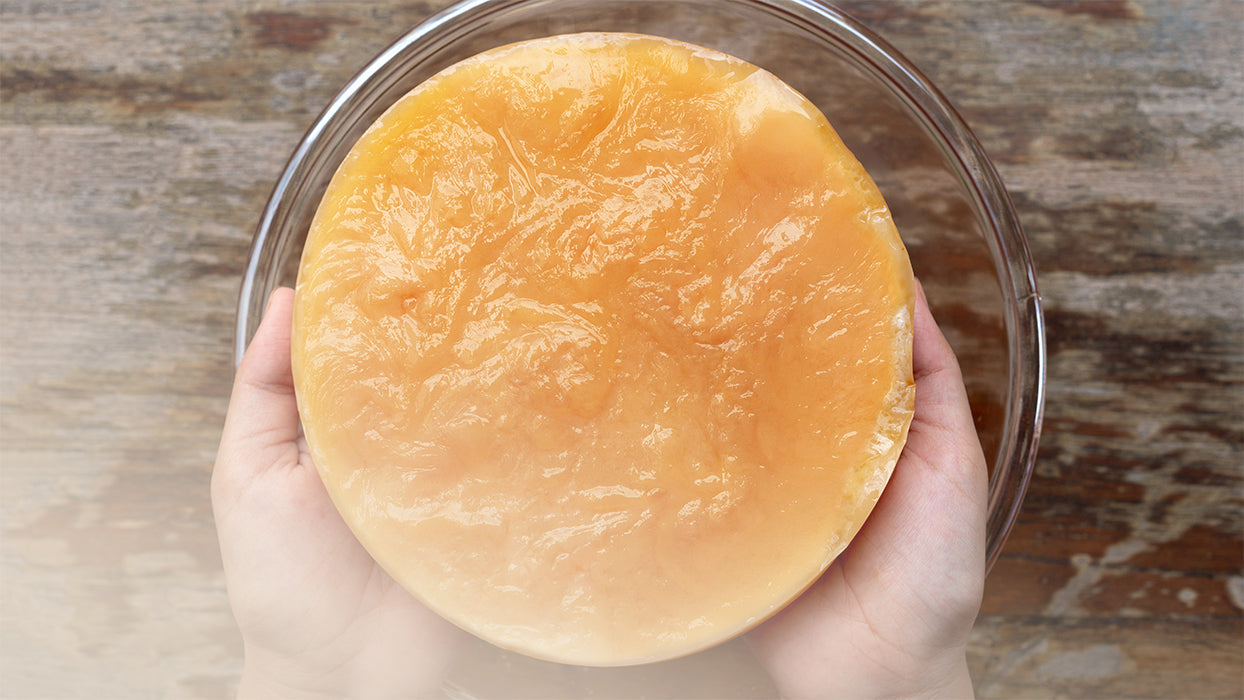
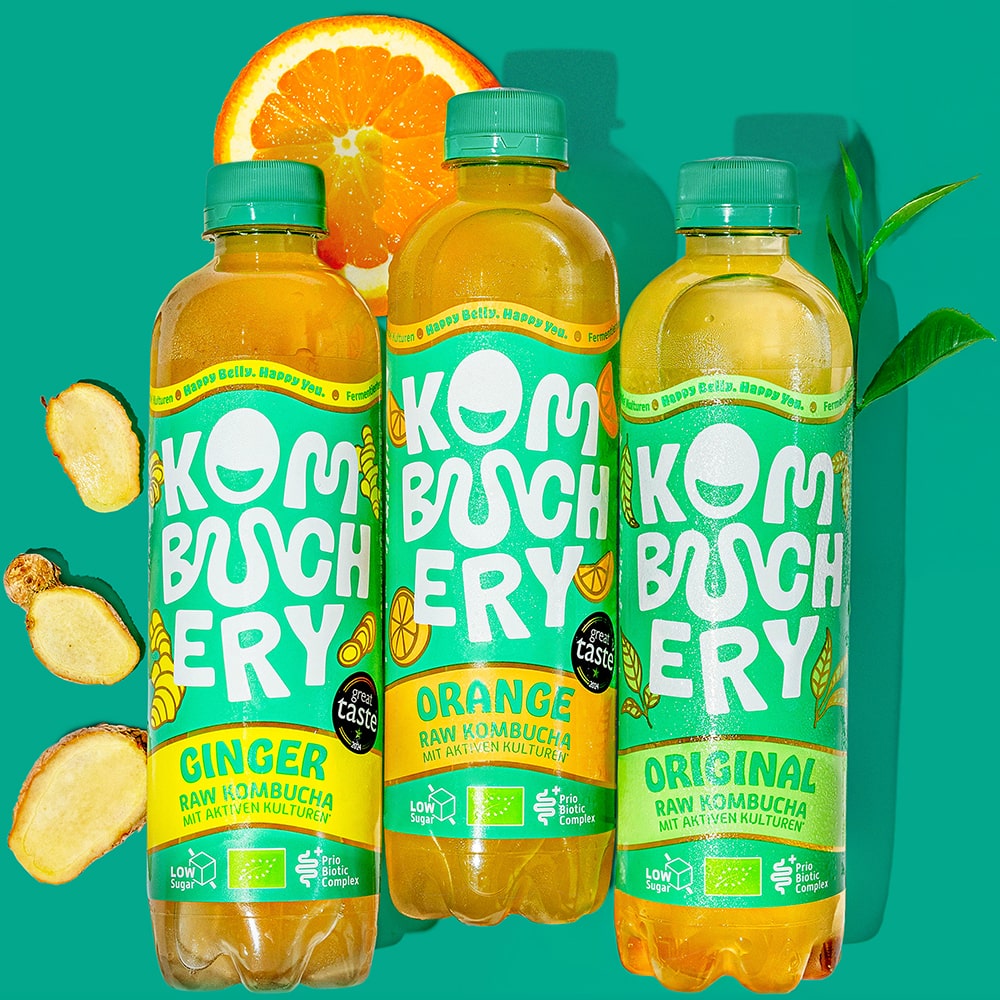

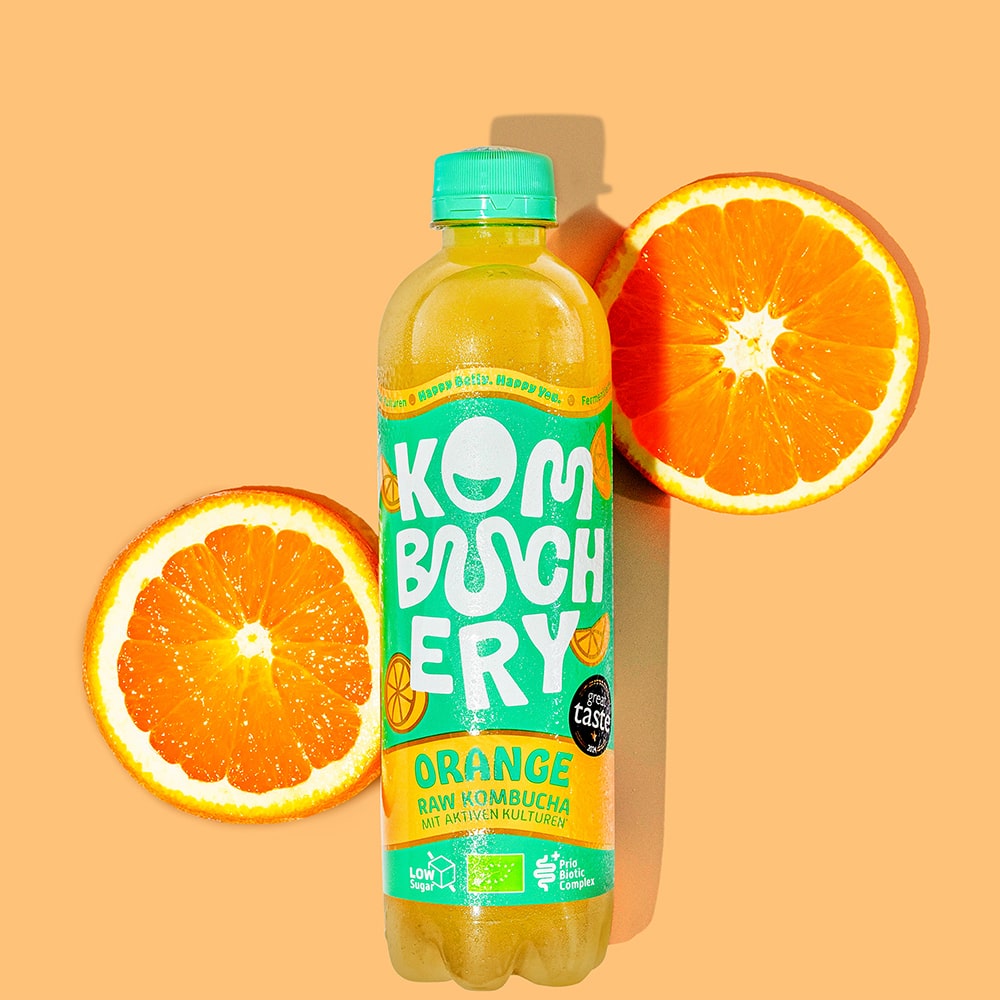
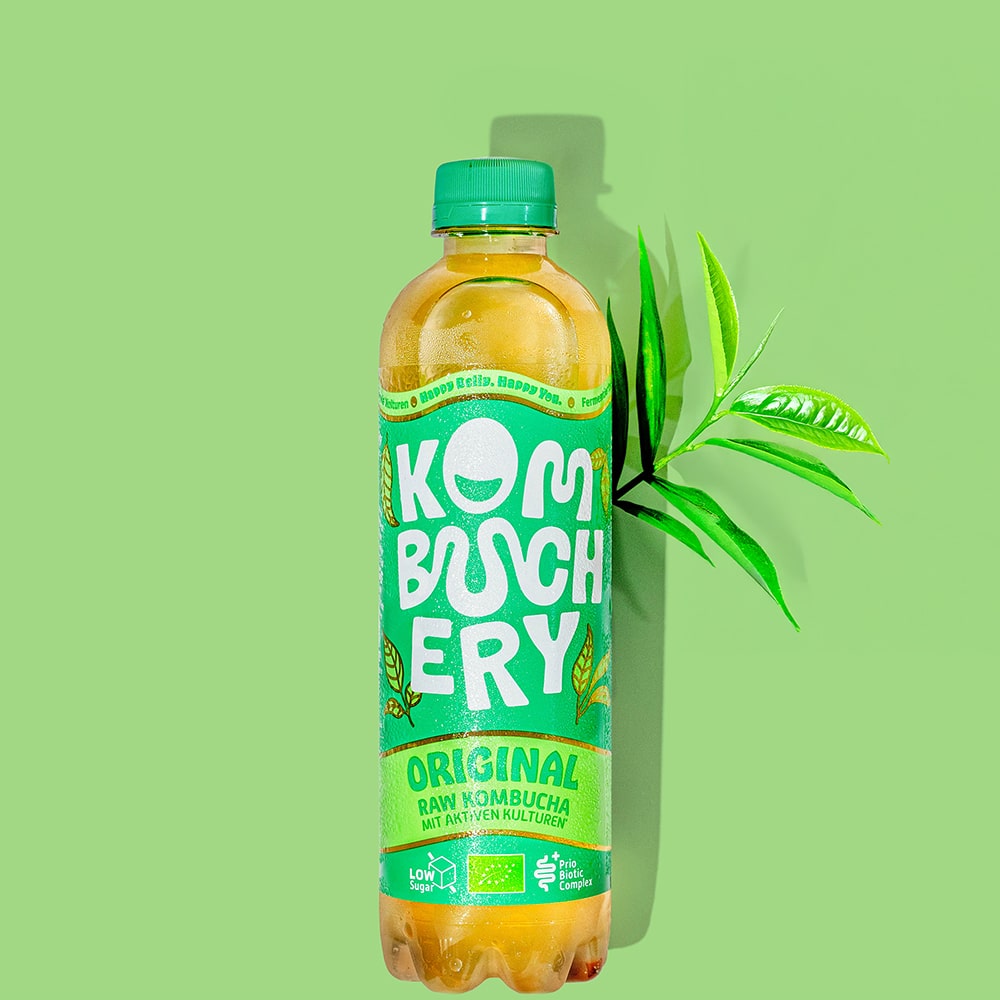





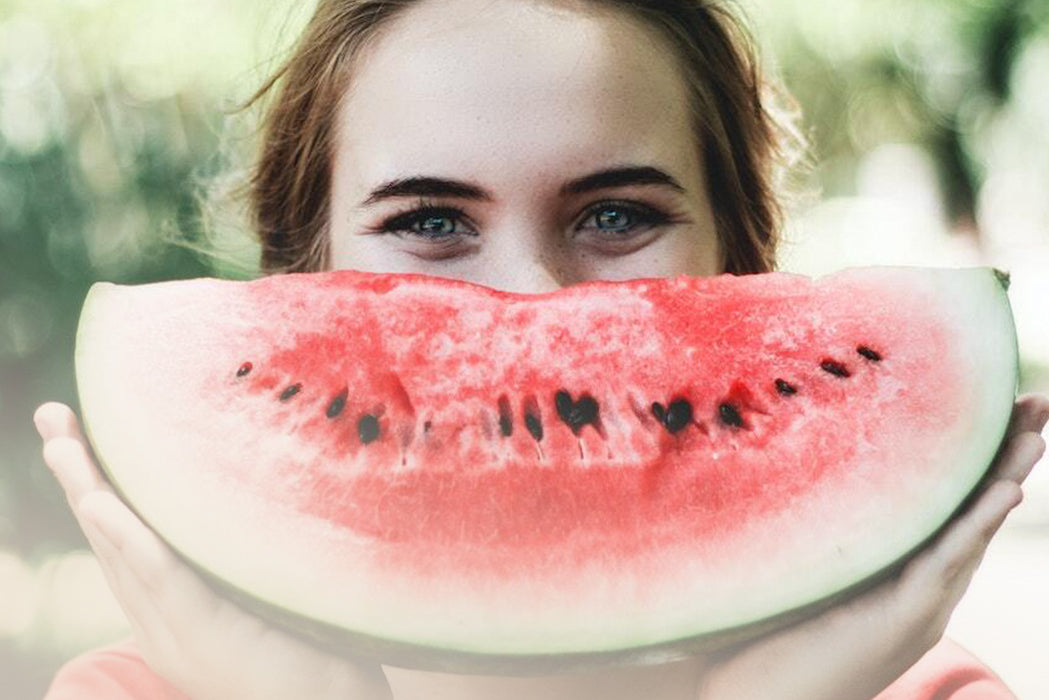

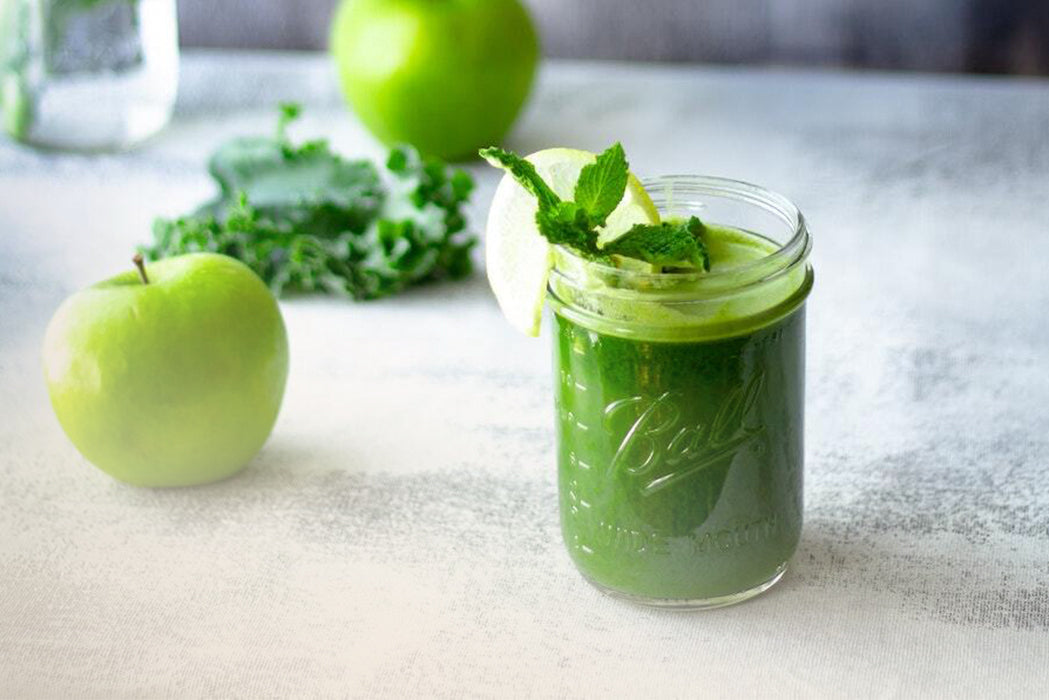
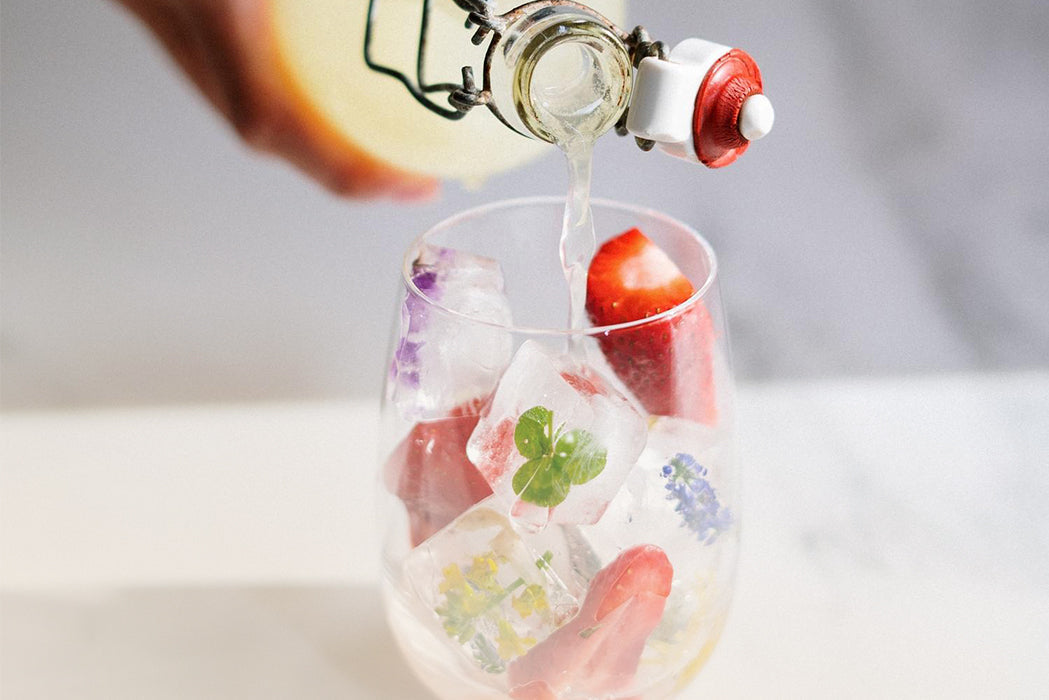
Split: